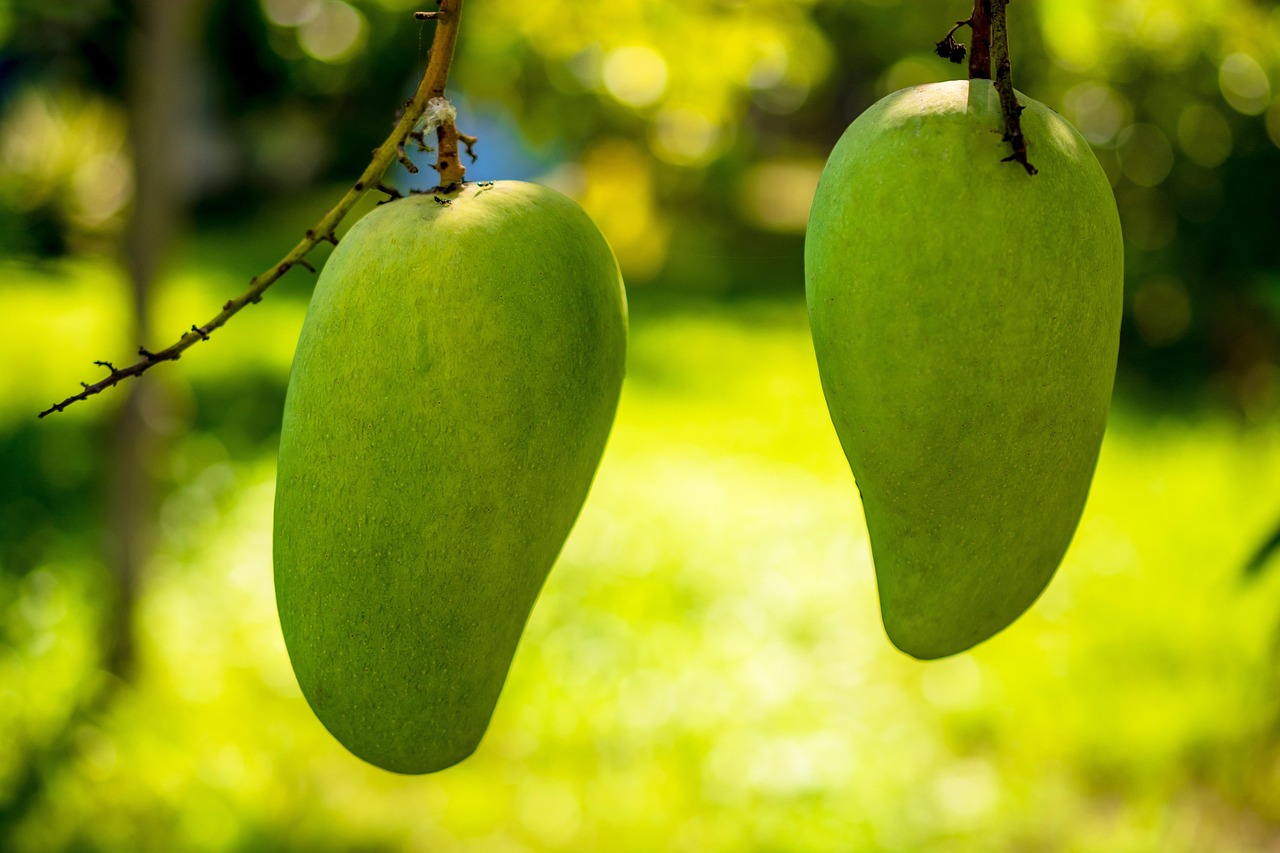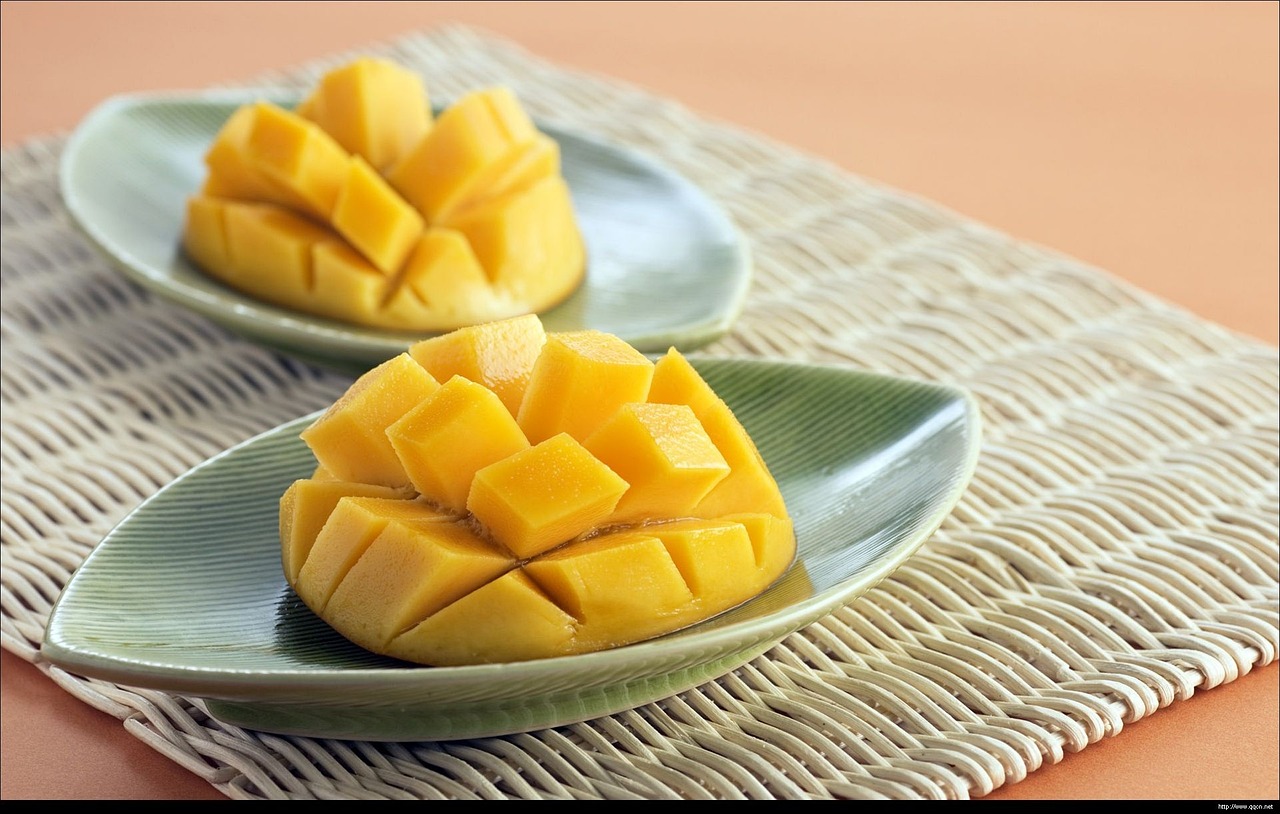Pruning mango trees in small and compact garden spaces is essential for maintaining their health and productivity. Proper pruning techniques help control the size, improve airflow, and enhance fruit quality, ensuring that even limited spaces can yield delicious mangoes.
Mango trees are beloved for their sweet, juicy fruits and vibrant foliage. However, they can grow quite large, making them challenging to manage in smaller gardens. Pruning is a crucial practice that can help cultivate these beautiful trees while maximizing the use of space. Understanding when and how to prune is vital for achieving the best results.

The ideal time to prune mango trees is during the dry season, typically in late winter or early spring. This timing helps prevent disease and promotes healthy growth as the tree enters its active growing phase. Proper pruning techniques not only help maintain a manageable size but also enhance fruit production by allowing more sunlight to penetrate the canopy.
Benefits of Pruning Mango Trees
Pruning offers several benefits that are particularly important for mango trees in compact spaces. Here are some key advantages:
- Size Control: Regular pruning keeps the tree at a manageable height and width, making it easier to harvest fruits.
- Improved Airflow: Thinning out excessive branches increases airflow, reducing the risk of fungal diseases.
- Enhanced Sunlight Exposure: Properly pruned trees receive more sunlight, which is essential for fruit ripening.
- Better Fruit Quality: Pruning encourages the development of larger, healthier fruits.
- Increased Yield: A well-pruned tree can produce more fruit due to better nutrient distribution.
Understanding the structure of mango trees is crucial before beginning any pruning. Mango trees typically have a central leader with several lateral branches. The growth habit of the tree can vary depending on the cultivar; some may be more bushy while others grow taller. Familiarizing yourself with these characteristics will help you make informed pruning decisions.

Tools Needed for Pruning
Before starting the pruning process, it’s essential to gather the right tools. Here are some tools commonly used for pruning mango trees:
- Hand Pruners: Ideal for cutting small branches and stems.
- Loppers: Useful for thicker branches that hand pruners cannot handle.
- Saw: A pruning saw is necessary for large branches that require more power to cut.
- Gloves: Protect your hands while handling tools and branches.
- Safety Glasses: Ensure eye protection while cutting branches.
Maintaining sharp and clean tools is essential for effective pruning. Sharp blades make cleaner cuts, which help the tree heal faster. Additionally, cleaning tools before and after use minimizes the risk of spreading diseases among plants.
Pruning Techniques to Consider
When pruning mango trees in small spaces, several techniques can be employed to achieve optimal results. Below are some recommended approaches:

- Crown Thinning: Remove selected branches from the canopy to improve airflow and light penetration.
- Crown Raising: Trim lower branches to create space for walking or gardening underneath the tree.
- Heading Back: Cut back branches to encourage bushier growth, particularly in younger trees.
- Removing Dead or Diseased Wood: Eliminate any dead or unhealthy branches to promote overall tree health.
Each technique serves a specific purpose and contributes to the overall well-being of the mango tree. It’s crucial to assess individual trees and adapt these techniques accordingly. Pruning should always be done with a clear goal in mind, focusing on enhancing the tree’s structure and fruit production.
Signs That Your Mango Tree Needs Pruning
Recognizing when to prune your mango tree can greatly influence its health and productivity. Here are some signs that indicate it may be time for a trim:
- Branches are crossing or rubbing against each other.
- The canopy appears dense, limiting sunlight penetration.
- The tree has grown significantly larger than intended for its space.
- There are signs of disease or dead wood present in the tree.
By paying attention to these signs, gardeners can take action before issues become more severe. Regular monitoring of your mango tree will help ensure it remains healthy and productive in compact garden settings.

Pruning Techniques for Small Spaces
When pruning mango trees in compact garden spaces, employing specific techniques can optimize growth and fruit production while maintaining a manageable size. Understanding these techniques is vital for ensuring that the tree thrives without overwhelming the limited area available.
Step-by-Step Pruning Process
To effectively prune a mango tree, it is important to follow a systematic approach. Here is a step-by-step guide:
- Assess the Tree: Begin by examining the tree for any dead, diseased, or crossing branches. Identify areas that need thinning.
- Gather Tools: Ensure you have your pruning tools ready. This includes hand pruners, loppers, and safety gear.
- Start with Dead or Diseased Wood: Remove any dead or infected branches first. This helps improve overall tree health.
- Thin Out Crowded Areas: Carefully remove branches that are crossing or densely packed. This enhances airflow and light penetration.
- Shape the Tree: Trim back overly long branches to maintain a balanced shape and size. Aim for a rounded canopy.
- Final Clean-Up: Collect all cuttings and dispose of them properly to prevent the spread of disease.
This structured approach ensures that each step is methodical and contributes positively to the tree’s health. Regular pruning will help maintain the desired size and shape of the mango tree throughout its growth stages.
Managing Height and Width
In small garden spaces, controlling both the height and width of a mango tree is crucial. Here are strategies for managing these dimensions:
Height Management
Mango trees can reach considerable heights, which may not be suitable for smaller gardens. To manage height, consider the following:
- Top Pruning: Regularly cut back the uppermost branches. This encourages lateral growth instead of vertical growth.
- Leader Removal: If the tree is growing too tall, consider removing the top leader branch. This will redirect energy to lower branches.
Width Management
Controlling the width of a mango tree is equally important for ensuring it fits within your garden layout. Techniques include:
- Crown Thinning: Remove outer branches to reduce overall width while allowing light into the center of the tree.
- Side Trimming: Trim back any branches that extend too far beyond the desired width, ensuring they do not encroach on nearby plants.
By implementing these strategies, gardeners can effectively manage both the height and width of mango trees, ensuring they remain proportionate to their garden space.
Timing Your Pruning
The timing of your pruning efforts greatly affects the health and productivity of mango trees. Below are some recommended timelines:
| Season | Recommended Action | Notes |
|---|---|---|
| Spring | Crown Thinning | This is ideal as trees are just starting their growth phase. |
| Summer | Light Trimming | Avoid heavy pruning during this season; focus on minor adjustments. |
| Fall | Dead Wood Removal | This prepares the tree for winter and reduces disease risk. |
| Winter | Major Pruning | Best time for significant cuts as trees are dormant. |
This table provides a clear overview of when to perform various pruning activities throughout the year. Timing is essential for promoting healthy growth and maximizing fruit production.
Post-Pruning Care
After pruning, it is crucial to provide proper care to ensure your mango tree recovers well and thrives. Consider these tips for post-pruning care:
- Watering: Ensure the tree receives adequate water, especially after pruning, to support new growth.
- Nourishment: Apply a balanced fertilizer to encourage healthy growth after pruning.
- Pest Monitoring: Keep an eye out for pests or diseases that may target freshly pruned areas.
- Mulching: Use mulch around the base of the tree to retain moisture and suppress weeds.
Taking these steps will facilitate recovery and promote strong growth following pruning, ensuring your mango tree remains healthy in a compact garden setting.
Mango Varieties Suitable for Small Gardens
Selecting the right variety of mango is also important when gardening in limited spaces. Some mango varieties are naturally smaller or more compact than others. Here are a few options:
- Palmer: Known for its sweet flavor and medium size, making it suitable for smaller gardens.
- Carrie: A dwarf variety that grows well in confined spaces and produces delicious fruits.
- Haden: While slightly larger, it can be maintained with regular pruning.
- Kent: Produces large fruits and can be kept small with proper care.
Selecting a compact variety allows gardeners to enjoy fresh mangoes without sacrificing space in their gardens. Each of these varieties has unique characteristics that make them suitable for small garden environments.
Common Pests and Diseases Affecting Mango Trees
Maintaining healthy mango trees in small garden spaces requires vigilance against pests and diseases. Understanding common issues helps in early detection and management, ensuring the tree remains productive and vibrant.
Common Pests
Several pests can affect mango trees, especially in warmer climates. Here are some of the most common pests to watch for:
- Mango Seed Weevil: This pest lays eggs in the mango seed, leading to fruit drop and deformity.
- Scale Insects: These insects suck sap from the tree, weakening it and leading to yellowing leaves.
- Aphids: Known for their rapid reproduction, aphids can cause curling leaves and may transmit diseases.
- Mango Fruit Fly: This fly lays eggs in the fruit, causing it to rot before it ripens.
- Leafcutter Ants: These ants can damage young leaves and stems as they cut them to use for nesting material.
Common Diseases
Mango trees are also susceptible to various diseases that can hinder their growth. Some notable diseases include:
- Anthracnose: A fungal disease that affects leaves, flowers, and fruits, leading to dark spots and rot.
- Powdery Mildew: This fungus covers leaves with a white powdery substance, reducing photosynthesis.
- Phytophthora: A root rot disease that thrives in overly wet conditions and can severely damage the tree.
- Bacterial Black Spot: This bacterial infection leads to dark spots on leaves and fruit, affecting overall growth.
Pest and Disease Management Strategies
Effective management of pests and diseases is crucial for maintaining a healthy mango tree. Here are some strategies for keeping your tree safe:
Preventative Measures
Preventing pests and diseases before they occur is the best strategy. Consider these measures:
- Regular Monitoring: Inspect your mango tree frequently for signs of pests or diseases.
- Proper Watering: Avoid over-watering to prevent root rot and fungal infections.
- Healthy Soil: Use well-draining soil enriched with organic matter to enhance tree health.
- Cultural Practices: Maintain good sanitation by removing fallen fruits and leaves that may harbor pests or diseases.
Treatment Options
If pests or diseases are detected, it’s essential to act quickly. Here are some treatment options:
- Insecticidal Soap: Effective against soft-bodied insects like aphids and spider mites.
- Neem Oil: A natural pesticide that can repel many pests while being safe for beneficial insects when used correctly.
- Copper Fungicide: Helps control fungal diseases like anthracnose and powdery mildew.
- Traps: Use traps specifically designed for fruit flies to monitor and control their populations.
The Role of Fertilization in Tree Health
Fertilization plays a significant role in the health and productivity of mango trees. Proper nutrition supports strong growth, enhances fruit quality, and helps trees resist pests and diseases.
Nutrients Essential for Mango Trees
Mango trees require various nutrients for optimal growth. Key nutrients include:
- Nitrogen: Promotes healthy leaf growth and overall vigor.
- Phosphorus: Essential for root development and flower production.
- Potassium: Improves fruit quality and helps manage stress from drought or disease.
Fertilization Schedule
A well-planned fertilization schedule ensures that mango trees receive the nutrients they need at the right times. Here is a recommended timeline:
| Time of Year | Recommended Fertilizer Type | Application Notes |
|---|---|---|
| Early Spring | Nitrogen-rich fertilizer | Apply as new growth begins to support leaf development. |
| Mid-Summer | Balanced fertilizer (N-P-K) | Aid in fruit development as they form on the tree. |
| Late Fall | Potassium-rich fertilizer | Prepare the tree for winter by enhancing nutrient reserves. |
This table provides a clear guideline on when to fertilize your mango tree throughout the year. Following this schedule will help ensure your tree has access to essential nutrients, promoting robust health and fruitful production.
Irrigation Practices for Mango Trees
Irrigation is another critical aspect of maintaining healthy mango trees, especially in small garden spaces. Proper watering practices can significantly influence growth, fruit quality, and overall tree health.
Irrigation Needs
Mango trees thrive in well-drained soil but require consistent moisture during certain growth stages. Here are some key points regarding irrigation needs:
- Younger Trees: Require more frequent watering as they establish roots.
- Mature Trees: Once established, mango trees are relatively drought-tolerant but still need regular watering during flowering and fruiting periods.
Irrigation Techniques
Selecting the right irrigation technique is vital for ensuring efficient water delivery. Consider these methods:
- Drip Irrigation: Provides slow, deep watering directly to the roots, reducing water waste.
- Soaker Hoses: Efficient for covering larger areas while allowing moisture to seep into the soil gradually.
- Hand Watering: For smaller gardens, this method may suffice but requires consistent attention.
By implementing effective irrigation practices, gardeners can ensure their mango trees remain hydrated without over-saturating the soil, leading to healthier plants and better fruit yields.
Additional Considerations for Growing Mango Trees
When cultivating mango trees in small and compact garden spaces, several additional factors can influence their success. Considering these elements can enhance both the growth and fruiting potential of your trees.
Climate Considerations
Mango trees thrive in warm, tropical climates but can also adapt to subtropical regions. Here are some climate considerations to keep in mind:
- Temperature: Mango trees prefer temperatures between 70°F and 100°F. They may struggle in areas where temperatures regularly drop below 30°F.
- Frost Protection: In regions where frost occurs, consider planting mango trees in sheltered areas or using frost cloths during cold snaps.
- Sunlight Requirements: Ensure your mango tree receives a minimum of six hours of direct sunlight daily for optimal growth and fruit production.
Soil Type and Preparation
The type of soil used for planting has a significant impact on the health of mango trees. Here are factors to consider regarding soil:
- Well-Draining Soil: Mango trees do not tolerate standing water well. Aim for sandy loam or clay soils with good drainage properties.
- Soil pH: Ideal soil pH for mango trees ranges between 5.5 and 7.5. Testing your soil can help you make necessary adjustments.
- Organic Matter: Incorporate organic matter, such as compost, to improve soil fertility and structure.
Mulching Techniques
Using mulch around mango trees can provide numerous benefits, including moisture retention, weed suppression, and temperature regulation. Here are some effective mulching techniques:
- Organic Mulch: Materials like wood chips, straw, or shredded leaves not only retain moisture but also break down over time, adding nutrients to the soil.
- Mulch Depth: Apply a mulch layer of about 2 to 4 inches around the base of the tree, keeping it away from the trunk to prevent rot.
- Regular Maintenance: Replenish mulch as needed to maintain its effectiveness throughout the growing season.
Final Thoughts
Pruning mango trees in small and compact garden spaces requires careful planning and management. By understanding the unique needs of these trees, including proper pruning techniques, pest management, irrigation practices, and nutrient requirements, gardeners can successfully cultivate healthy mango trees even in limited areas.
The selection of appropriate varieties also plays a crucial role in maximizing space while ensuring fruit production. Monitoring environmental conditions and implementing effective soil and irrigation practices will further enhance growth and yield.
Ultimately, with dedication and attention to detail, growing mango trees in small gardens can be a rewarding experience. Not only do these trees provide delicious fruit, but they also add beauty and greenery to any space. By following the guidelines outlined in this article, you can enjoy a thriving mango tree that fits perfectly within your compact garden environment.
